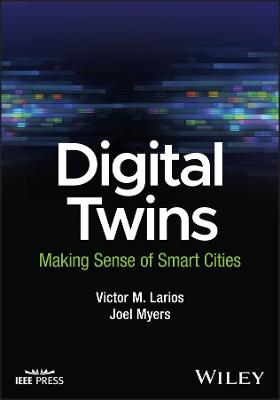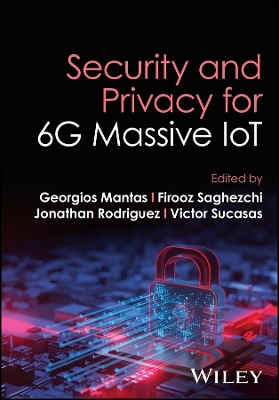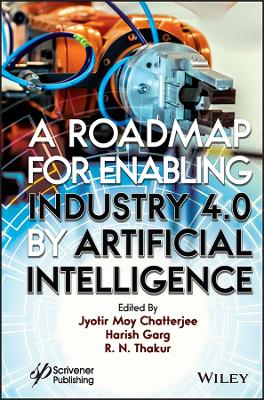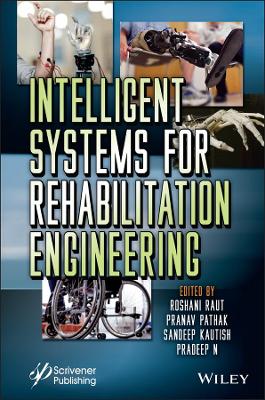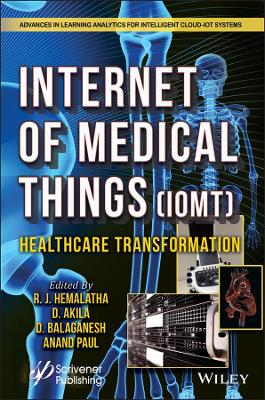Machine Learning Paradigm for Internet of Things Applications
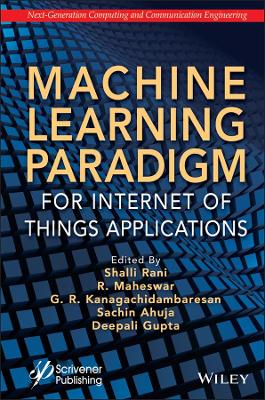 -15%
portes grátis
-15%
portes grátis
Machine Learning Paradigm for Internet of Things Applications
Kanagachidambaresan, G. R.; Gupta, Deepali; Maheswar, R.; Ahuja, Sachin; Rani, Shalli
John Wiley & Sons Inc
03/2022
304
Dura
Inglês
9781119760474
15 a 20 dias
546
1 Machine Learning Concept-Based IoT Platforms for Smart Cities' Implementation and Requirements 1
M. Saravanan, J. Ajayan, R. Maheswar, Eswaran Parthasarathy and K. Sumathi
1.1 Introduction 2
1.2 Smart City Structure in India 3
1.2.1 Bhubaneswar City 3
1.2.1.1 Specifications 3
1.2.1.2 Healthcare and Mobility Services 3
1.2.1.3 Productivity 4
1.2.2 Smart City in Pune 4
1.2.2.1 Specifications 5
1.2.2.2 Transport and Mobility 5
1.2.2.3 Water and Sewage Management 5
1.3 Status of Smart Cities in India 5
1.3.1 Funding Process by Government 6
1.4 Analysis of Smart City Setup 7
1.4.1 Physical Infrastructure-Based 7
1.4.2 Social Infrastructure-Based 7
1.4.3 Urban Mobility 8
1.4.4 Solid Waste Management System 8
1.4.5 Economical-Based Infrastructure 9
1.4.6 Infrastructure-Based Development 9
1.4.7 Water Supply System 10
1.4.8 Sewage Networking 10
1.5 Ideal Planning for the Sewage Networking Systems 10
1.5.1 Availability and Ideal Consumption of Resources 10
1.5.2 Anticipating Future Demand 11
1.5.3 Transporting Networks to Facilitate 11
1.5.4 Control Centers for Governing the City 12
1.5.5 Integrated Command and Control Center 12
1.6 Heritage of Culture Based on Modern Advancement 13
1.7 Funding and Business Models to Leverage 14
1.7.1 Fundings 15
1.8 Community-Based Development 16
1.8.1 Smart Medical Care 16
1.8.2 Smart Safety for The IT 16
1.8.3 IoT Communication Interface With ML 17
1.8.4 Machine Learning Algorithms 17
1.8.5 Smart Community 18
1.9 Revolutionary Impact With Other Locations 18
1.10 Finding Balanced City Development 20
1.11 E-Industry With Enhanced Resources 20
1.12 Strategy for Development of Smart Cities 21
1.12.1 Stakeholder Benefits 21
1.12.2 Urban Integration 22
1.12.3 Future Scope of City Innovations 22
1.12.4 Conclusion 23
References 24
2 An Empirical Study on Paddy Harvest and Rice Demand Prediction for an Optimal Distribution Plan 27
W. H. Rankothge
2.1 Introduction 28
2.2 Background 29
2.2.1 Prediction of Future Paddy Harvest and Rice Consumption Demand 29
2.2.2 Rice Distribution 31
2.3 Methodology 31
2.3.1 Requirements of the Proposed Platform 32
2.3.2 Data to Evaluate the 'isRice" Platform 34
2.3.3 Implementation of Prediction Modules 34
2.3.3.1 Recurrent Neural Network 35
2.3.3.2 Long Short-Term Memory 36
2.3.3.3 Paddy Harvest Prediction Function 37
2.3.3.4 Rice Demand Prediction Function 39
2.3.4 Implementation of Rice Distribution Planning Module 40
2.3.4.1 Genetic Algorithm-Based Rice Distribution Planning 41
2.3.5 Front-End Implementation 44
2.4 Results and Discussion 45
2.4.1 Paddy Harvest Prediction Function 45
2.4.2 Rice Demand Prediction Function 46
2.4.3 Rice Distribution Planning Module 46
2.5 Conclusion 49
References 49
3 A Collaborative Data Publishing Model with Privacy Preservation Using Group-Based Classification and Anonymity 53
Carmel Mary Belinda M. J., K. Antonykumar, S. Ravikumar and Yogesh R. Kulkarni
3.1 Introduction 54
3.2 Literature Survey 56
3.3 Proposed Model 58
3.4 Results 61
3.5 Conclusion 64
References 64
4 Production Monitoring and Dashboard Design for Industry 4.0 Using Single-Board Computer (SBC) 67
Dineshbabu V., Arul Kumar V. P. and Gowtham M. S.
4.1 Introduction 68
4.2 Related Works 69
4.3 Industry 4.0 Production and Dashboard Design 69
4.4 Results and Discussion 70
4.5 Conclusion 73
References 73
5 Generation of Two-Dimensional Text-Based CAPTCHA Using Graphical Operation 75
S. Pradeep Kumar and G. Kalpana
5.1 Introduction 75
5.2 Types of CAPTCHAs 78
5.2.1 Text-Based CAPTCHA 78
5.2.2 Image-Based CAPTCHA 80
5.2.3 Audio-Based CAPTCHA 80
5.2.4 Video-Based CAPTCHA 81
5.2.5 Puzzle-Based CAPTCHA 82
5.3 Related Work 82
5.4 Proposed Technique 82
5.5 Text-Based CAPTCHA Scheme 83
5.6 Breaking Text-Based CAPTCHA's Scheme 85
5.6.1 Individual Character-Based Segmentation Method 85
5.6.2 Character Width-Based Segmentation Method 86
5.7 Implementation of Text-Based CAPTCHA Using Graphical Operation 87
5.7.1 Graphical Operation 87
5.7.2 Two-Dimensional Composite Transformation Calculation 89
5.8 Graphical Text-Based CAPTCHA in Online Application 91
5.9 Conclusion and Future Enhancement 93
References 94
6 Smart IoT-Enabled Traffic Sign Recognition With High Accuracy (TSR-HA) Using Deep Learning 97
Pradeep Kumar S., Jayanthi K. and Selvakumari S.
6.1 Introduction 98
6.1.1 Internet of Things 98
6.1.2 Deep Learning 98
6.1.3 Detecting the Traffic Sign With the Mask R-CNN 99
6.1.3.1 Mask R-Convolutional Neural Network 99
6.1.3.2 Color Space Conversion 100
6.2 Experimental Evaluation 101
6.2.1 Implementation Details 101
6.2.2 Traffic Sign Classification 101
6.2.3 Traffic Sign Detection 102
6.2.4 Sample Outputs 103
6.2.5 Raspberry Pi 4 Controls Vehicle Using OpenCV 103
6.2.5.1 Smart IoT-Enabled Traffic Signs Recognizing With High Accuracy Using Deep Learning 103
6.2.6 Python Code 108
6.3 Conclusion 109
References 110
7 Offline and Online Performance Evaluation Metrics of Recommender System: A Bird's Eye View 113
R. Bhuvanya and M. Kavitha
7.1 Introduction 114
7.1.1 Modules of Recommender System 114
7.1.2 Evaluation Structure 115
7.1.3 Contribution of the Paper 115
7.1.4 Organization of the Paper 116
7.2 Evaluation Metrics 116
7.2.1 Offline Analytics 116
7.2.1.1 Prediction Accuracy Metrics 116
7.2.1.2 Decision Support Metrics 118
7.2.1.3 Rank Aware Top-N Metrics 120
7.2.2 Item and List-Based Metrics 122
7.2.2.1 Coverage 122
7.2.2.2 Popularity 123
7.2.2.3 Personalization 123
7.2.2.4 Serendipity 123
7.2.2.5 Diversity 123
7.2.2.6 Churn 124
7.2.2.7 Responsiveness 124
7.2.3 User Studies and Online Evaluation 125
7.2.3.1 Usage Log 125
7.2.3.2 Polls 126
7.2.3.3 Lab Experiments 126
7.2.3.4 Online A/B Test 126
7.3 Related Works 127
7.3.1 Categories of Recommendation 129
7.3.2 Data Mining Methods of Recommender System 129
7.3.2.1 Data Pre-Processing 129
7.3.2.2 Data Analysis 131
7.4 Experimental Setup 135
7.5 Summary and Conclusions 142
References 143
8 Deep Learning-Enabled Smart Safety Precautions and Measures in Public Gathering Places for COVID-19 Using IoT 147
Pradeep Kumar S., Pushpakumar R. and Selvakumari S.
8.1 Introduction 148
8.2 Prelims 148
8.2.1 Digital Image Processing 148
8.2.2 Deep Learning 149
8.2.3 WSN 149
8.2.4 Raspberry Pi 152
8.2.5 Thermal Sensor 152
8.2.6 Relay 152
8.2.7 TensorFlow 153
8.2.8 Convolution Neural Network (CNN) 153
8.3 Proposed System 154
8.4 Math Model 156
8.5 Results 158
8.6 Conclusion 161
References 161
9 Route Optimization for Perishable Goods Transportation System 167
Kowsalyadevi A. K., Megala M. and Manivannan C.
9.1 Introduction 167
9.2 Related Works 168
9.2.1 Need for Route Optimization 170
9.3 Proposed Methodology 171
9.4 Proposed Work Implementation 174
9.5 Conclusion 178
References 178
10 Fake News Detection Using Machine Learning Algorithms 181
M. Kavitha, R. Srinivasan and R. Bhuvanya
10.1 Introduction 181
10.2 Literature Survey 183
10.3 Methodology 193
10.3.1 Data Retrieval 195
10.3.2 Data Pre-Processing 195
10.3.3 Data Visualization 196
10.3.4 Tokenization 196
10.3.5 Feature Extraction 196
10.3.6 Machine Learning Algorithms 197
10.3.6.1 Logistic Regression 197
10.3.6.2 Naive Bayes 198
10.3.6.3 Random Forest 200
10.3.6.4 XGBoost 200
10.4 Experimental Results 202
10.5 Conclusion 203
References 203
11 Opportunities and Challenges in Machine Learning With IoT 209
Sarvesh Tanwar, Jatin Garg, Medini Gupta and Ajay Rana
11.1 Introduction 209
11.2 Literature Review 210
11.2.1 A Designed Architecture of ML on Big Data 210
11.2.2 Machine Learning 211
11.2.3 Types of Machine Learning 212
11.2.3.1 Supervised Learning 212
11.2.3.2 Unsupervised Learning 215
11.3 Why Should We Care About Learning Representations? 217
11.4 Big Data 218
11.5 Data Processing Opportunities and Challenges 219
11.5.1 Data Redundancy 219
11.5.2 Data Noise 220
11.5.3 Heterogeneity of Data 220
11.5.4 Discretization of Data 220
11.5.5 Data Labeling 221
11.5.6 Imbalanced Data 221
11.6 Learning Opportunities and Challenges 221
11.7 Enabling Machine Learning With IoT 223
11.8 Conclusion 224
References 225
12 Machine Learning Effects on Underwater Applications and IoUT 229
Mamta Nain, Nitin Goyal and Manni Kumar
12.1 Introduction 229
12.2 Characteristics of IoUT 231
12.3 Architecture of IoUT 232
12.3.1 Perceptron Layer 233
12.3.2 Network Layer 234
12.3.3 Application Layer 234
12.4 Challenges in IoUT 234
12.5 Applications of IoUT 235
12.6 Machine Learning 240
12.7 Simulation and Analysis 241
12.8 Conclusion 242
References 242
13 Internet of Underwater Things: Challenges, Routing Protocols, and ML Algorithms 247
Monika Chaudhary, Nitin Goyal and Aadil Mushtaq
13.1 Introduction 248
13.2 Internet of Underwater Things 248
13.2.1 Challenges in IoUT 249
13.3 Routing Protocols of IoUT 250
13.4 Machine Learning in IoUT 255
13.4.1 Types of Machine Learning Algorithms 258
13.5 Performance Evaluation 259
13.6 Conclusion 260
References 260
14 Chest X-Ray for Pneumonia Detection 265
Sarang Sharma, Sheifali Gupta and Deepali Gupta
14.1 Introduction 266
14.2 Background 267
14.3 Research Methodology 268
14.4 Results and Discussion 271
14.4.1 Results 271
14.4.2 Discussion 271
14.5 Conclusion 273
Acknowledgment 273
References 274
Index 275
1 Machine Learning Concept-Based IoT Platforms for Smart Cities' Implementation and Requirements 1
M. Saravanan, J. Ajayan, R. Maheswar, Eswaran Parthasarathy and K. Sumathi
1.1 Introduction 2
1.2 Smart City Structure in India 3
1.2.1 Bhubaneswar City 3
1.2.1.1 Specifications 3
1.2.1.2 Healthcare and Mobility Services 3
1.2.1.3 Productivity 4
1.2.2 Smart City in Pune 4
1.2.2.1 Specifications 5
1.2.2.2 Transport and Mobility 5
1.2.2.3 Water and Sewage Management 5
1.3 Status of Smart Cities in India 5
1.3.1 Funding Process by Government 6
1.4 Analysis of Smart City Setup 7
1.4.1 Physical Infrastructure-Based 7
1.4.2 Social Infrastructure-Based 7
1.4.3 Urban Mobility 8
1.4.4 Solid Waste Management System 8
1.4.5 Economical-Based Infrastructure 9
1.4.6 Infrastructure-Based Development 9
1.4.7 Water Supply System 10
1.4.8 Sewage Networking 10
1.5 Ideal Planning for the Sewage Networking Systems 10
1.5.1 Availability and Ideal Consumption of Resources 10
1.5.2 Anticipating Future Demand 11
1.5.3 Transporting Networks to Facilitate 11
1.5.4 Control Centers for Governing the City 12
1.5.5 Integrated Command and Control Center 12
1.6 Heritage of Culture Based on Modern Advancement 13
1.7 Funding and Business Models to Leverage 14
1.7.1 Fundings 15
1.8 Community-Based Development 16
1.8.1 Smart Medical Care 16
1.8.2 Smart Safety for The IT 16
1.8.3 IoT Communication Interface With ML 17
1.8.4 Machine Learning Algorithms 17
1.8.5 Smart Community 18
1.9 Revolutionary Impact With Other Locations 18
1.10 Finding Balanced City Development 20
1.11 E-Industry With Enhanced Resources 20
1.12 Strategy for Development of Smart Cities 21
1.12.1 Stakeholder Benefits 21
1.12.2 Urban Integration 22
1.12.3 Future Scope of City Innovations 22
1.12.4 Conclusion 23
References 24
2 An Empirical Study on Paddy Harvest and Rice Demand Prediction for an Optimal Distribution Plan 27
W. H. Rankothge
2.1 Introduction 28
2.2 Background 29
2.2.1 Prediction of Future Paddy Harvest and Rice Consumption Demand 29
2.2.2 Rice Distribution 31
2.3 Methodology 31
2.3.1 Requirements of the Proposed Platform 32
2.3.2 Data to Evaluate the 'isRice" Platform 34
2.3.3 Implementation of Prediction Modules 34
2.3.3.1 Recurrent Neural Network 35
2.3.3.2 Long Short-Term Memory 36
2.3.3.3 Paddy Harvest Prediction Function 37
2.3.3.4 Rice Demand Prediction Function 39
2.3.4 Implementation of Rice Distribution Planning Module 40
2.3.4.1 Genetic Algorithm-Based Rice Distribution Planning 41
2.3.5 Front-End Implementation 44
2.4 Results and Discussion 45
2.4.1 Paddy Harvest Prediction Function 45
2.4.2 Rice Demand Prediction Function 46
2.4.3 Rice Distribution Planning Module 46
2.5 Conclusion 49
References 49
3 A Collaborative Data Publishing Model with Privacy Preservation Using Group-Based Classification and Anonymity 53
Carmel Mary Belinda M. J., K. Antonykumar, S. Ravikumar and Yogesh R. Kulkarni
3.1 Introduction 54
3.2 Literature Survey 56
3.3 Proposed Model 58
3.4 Results 61
3.5 Conclusion 64
References 64
4 Production Monitoring and Dashboard Design for Industry 4.0 Using Single-Board Computer (SBC) 67
Dineshbabu V., Arul Kumar V. P. and Gowtham M. S.
4.1 Introduction 68
4.2 Related Works 69
4.3 Industry 4.0 Production and Dashboard Design 69
4.4 Results and Discussion 70
4.5 Conclusion 73
References 73
5 Generation of Two-Dimensional Text-Based CAPTCHA Using Graphical Operation 75
S. Pradeep Kumar and G. Kalpana
5.1 Introduction 75
5.2 Types of CAPTCHAs 78
5.2.1 Text-Based CAPTCHA 78
5.2.2 Image-Based CAPTCHA 80
5.2.3 Audio-Based CAPTCHA 80
5.2.4 Video-Based CAPTCHA 81
5.2.5 Puzzle-Based CAPTCHA 82
5.3 Related Work 82
5.4 Proposed Technique 82
5.5 Text-Based CAPTCHA Scheme 83
5.6 Breaking Text-Based CAPTCHA's Scheme 85
5.6.1 Individual Character-Based Segmentation Method 85
5.6.2 Character Width-Based Segmentation Method 86
5.7 Implementation of Text-Based CAPTCHA Using Graphical Operation 87
5.7.1 Graphical Operation 87
5.7.2 Two-Dimensional Composite Transformation Calculation 89
5.8 Graphical Text-Based CAPTCHA in Online Application 91
5.9 Conclusion and Future Enhancement 93
References 94
6 Smart IoT-Enabled Traffic Sign Recognition With High Accuracy (TSR-HA) Using Deep Learning 97
Pradeep Kumar S., Jayanthi K. and Selvakumari S.
6.1 Introduction 98
6.1.1 Internet of Things 98
6.1.2 Deep Learning 98
6.1.3 Detecting the Traffic Sign With the Mask R-CNN 99
6.1.3.1 Mask R-Convolutional Neural Network 99
6.1.3.2 Color Space Conversion 100
6.2 Experimental Evaluation 101
6.2.1 Implementation Details 101
6.2.2 Traffic Sign Classification 101
6.2.3 Traffic Sign Detection 102
6.2.4 Sample Outputs 103
6.2.5 Raspberry Pi 4 Controls Vehicle Using OpenCV 103
6.2.5.1 Smart IoT-Enabled Traffic Signs Recognizing With High Accuracy Using Deep Learning 103
6.2.6 Python Code 108
6.3 Conclusion 109
References 110
7 Offline and Online Performance Evaluation Metrics of Recommender System: A Bird's Eye View 113
R. Bhuvanya and M. Kavitha
7.1 Introduction 114
7.1.1 Modules of Recommender System 114
7.1.2 Evaluation Structure 115
7.1.3 Contribution of the Paper 115
7.1.4 Organization of the Paper 116
7.2 Evaluation Metrics 116
7.2.1 Offline Analytics 116
7.2.1.1 Prediction Accuracy Metrics 116
7.2.1.2 Decision Support Metrics 118
7.2.1.3 Rank Aware Top-N Metrics 120
7.2.2 Item and List-Based Metrics 122
7.2.2.1 Coverage 122
7.2.2.2 Popularity 123
7.2.2.3 Personalization 123
7.2.2.4 Serendipity 123
7.2.2.5 Diversity 123
7.2.2.6 Churn 124
7.2.2.7 Responsiveness 124
7.2.3 User Studies and Online Evaluation 125
7.2.3.1 Usage Log 125
7.2.3.2 Polls 126
7.2.3.3 Lab Experiments 126
7.2.3.4 Online A/B Test 126
7.3 Related Works 127
7.3.1 Categories of Recommendation 129
7.3.2 Data Mining Methods of Recommender System 129
7.3.2.1 Data Pre-Processing 129
7.3.2.2 Data Analysis 131
7.4 Experimental Setup 135
7.5 Summary and Conclusions 142
References 143
8 Deep Learning-Enabled Smart Safety Precautions and Measures in Public Gathering Places for COVID-19 Using IoT 147
Pradeep Kumar S., Pushpakumar R. and Selvakumari S.
8.1 Introduction 148
8.2 Prelims 148
8.2.1 Digital Image Processing 148
8.2.2 Deep Learning 149
8.2.3 WSN 149
8.2.4 Raspberry Pi 152
8.2.5 Thermal Sensor 152
8.2.6 Relay 152
8.2.7 TensorFlow 153
8.2.8 Convolution Neural Network (CNN) 153
8.3 Proposed System 154
8.4 Math Model 156
8.5 Results 158
8.6 Conclusion 161
References 161
9 Route Optimization for Perishable Goods Transportation System 167
Kowsalyadevi A. K., Megala M. and Manivannan C.
9.1 Introduction 167
9.2 Related Works 168
9.2.1 Need for Route Optimization 170
9.3 Proposed Methodology 171
9.4 Proposed Work Implementation 174
9.5 Conclusion 178
References 178
10 Fake News Detection Using Machine Learning Algorithms 181
M. Kavitha, R. Srinivasan and R. Bhuvanya
10.1 Introduction 181
10.2 Literature Survey 183
10.3 Methodology 193
10.3.1 Data Retrieval 195
10.3.2 Data Pre-Processing 195
10.3.3 Data Visualization 196
10.3.4 Tokenization 196
10.3.5 Feature Extraction 196
10.3.6 Machine Learning Algorithms 197
10.3.6.1 Logistic Regression 197
10.3.6.2 Naive Bayes 198
10.3.6.3 Random Forest 200
10.3.6.4 XGBoost 200
10.4 Experimental Results 202
10.5 Conclusion 203
References 203
11 Opportunities and Challenges in Machine Learning With IoT 209
Sarvesh Tanwar, Jatin Garg, Medini Gupta and Ajay Rana
11.1 Introduction 209
11.2 Literature Review 210
11.2.1 A Designed Architecture of ML on Big Data 210
11.2.2 Machine Learning 211
11.2.3 Types of Machine Learning 212
11.2.3.1 Supervised Learning 212
11.2.3.2 Unsupervised Learning 215
11.3 Why Should We Care About Learning Representations? 217
11.4 Big Data 218
11.5 Data Processing Opportunities and Challenges 219
11.5.1 Data Redundancy 219
11.5.2 Data Noise 220
11.5.3 Heterogeneity of Data 220
11.5.4 Discretization of Data 220
11.5.5 Data Labeling 221
11.5.6 Imbalanced Data 221
11.6 Learning Opportunities and Challenges 221
11.7 Enabling Machine Learning With IoT 223
11.8 Conclusion 224
References 225
12 Machine Learning Effects on Underwater Applications and IoUT 229
Mamta Nain, Nitin Goyal and Manni Kumar
12.1 Introduction 229
12.2 Characteristics of IoUT 231
12.3 Architecture of IoUT 232
12.3.1 Perceptron Layer 233
12.3.2 Network Layer 234
12.3.3 Application Layer 234
12.4 Challenges in IoUT 234
12.5 Applications of IoUT 235
12.6 Machine Learning 240
12.7 Simulation and Analysis 241
12.8 Conclusion 242
References 242
13 Internet of Underwater Things: Challenges, Routing Protocols, and ML Algorithms 247
Monika Chaudhary, Nitin Goyal and Aadil Mushtaq
13.1 Introduction 248
13.2 Internet of Underwater Things 248
13.2.1 Challenges in IoUT 249
13.3 Routing Protocols of IoUT 250
13.4 Machine Learning in IoUT 255
13.4.1 Types of Machine Learning Algorithms 258
13.5 Performance Evaluation 259
13.6 Conclusion 260
References 260
14 Chest X-Ray for Pneumonia Detection 265
Sarang Sharma, Sheifali Gupta and Deepali Gupta
14.1 Introduction 266
14.2 Background 267
14.3 Research Methodology 268
14.4 Results and Discussion 271
14.4.1 Results 271
14.4.2 Discussion 271
14.5 Conclusion 273
Acknowledgment 273
References 274
Index 275

